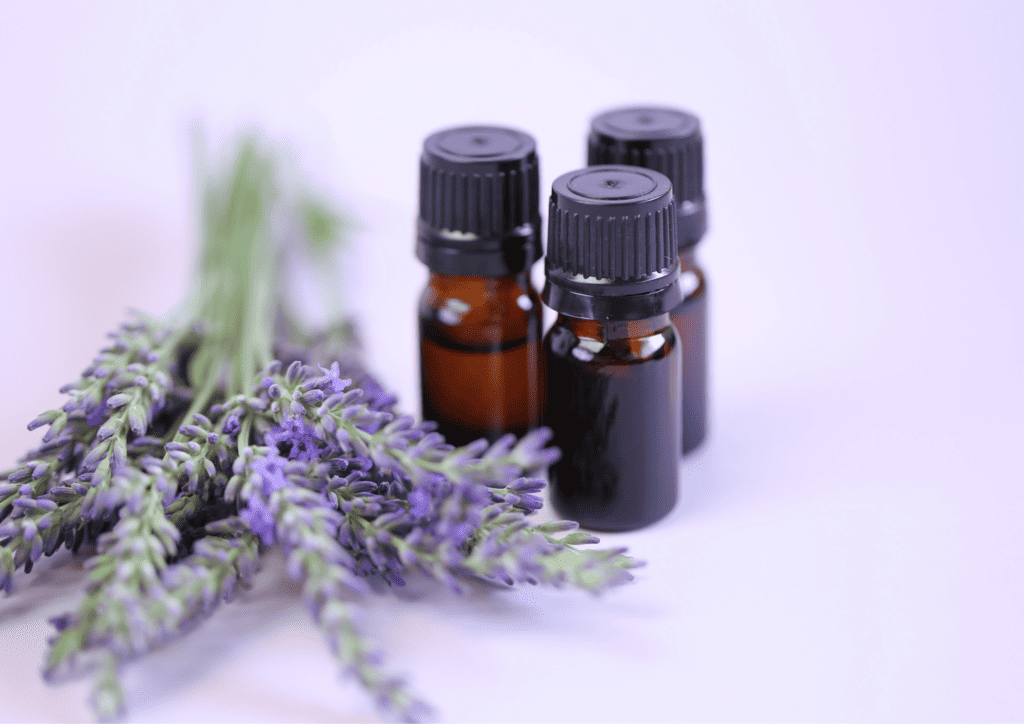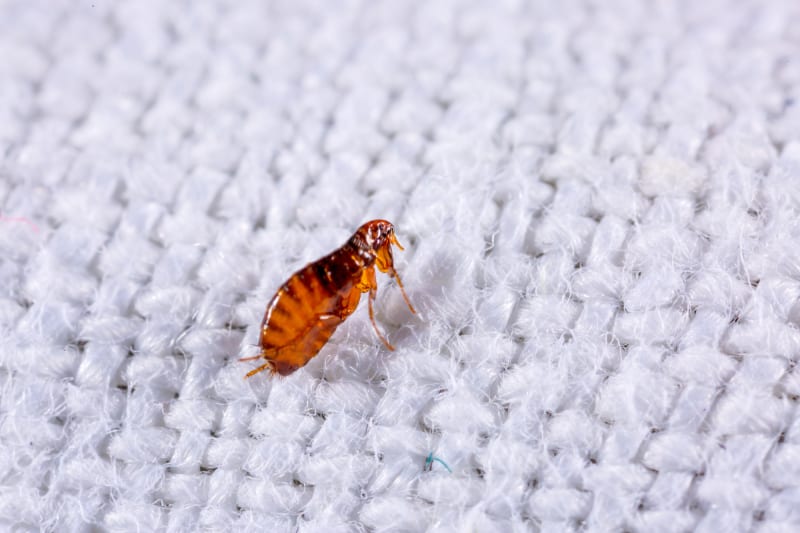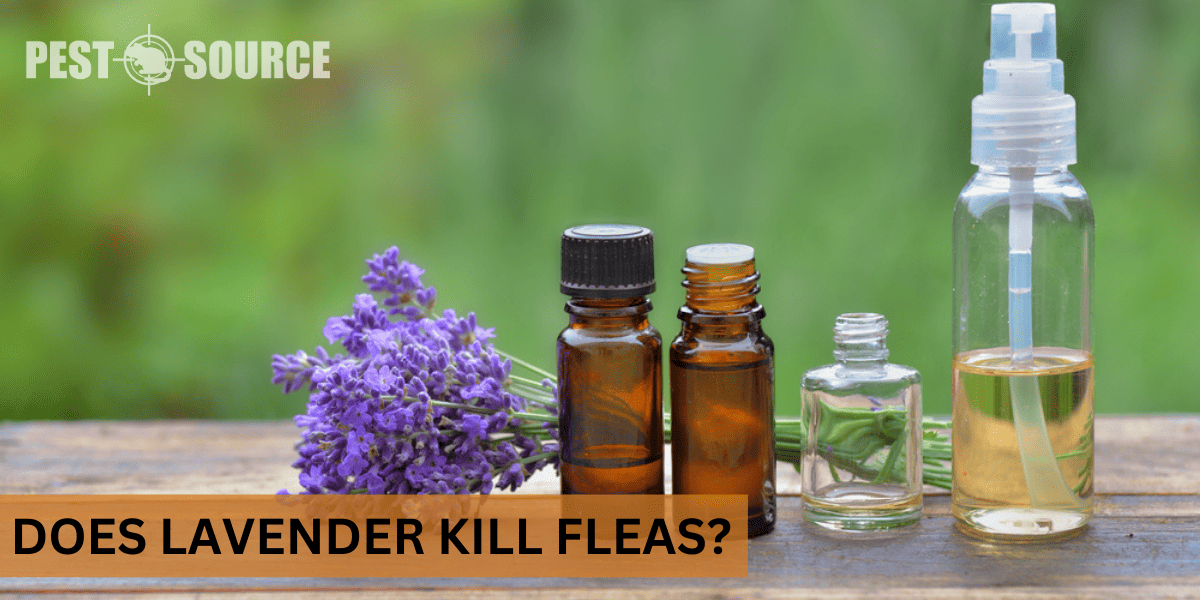Are you tired of battling fleas on your pets and seeking a natural, fragrant solution that is both effective and safe for your furry friends? Lavender, a beautiful flowering herb, has become a popular alternative for flea control due to its potential repellent properties.
In this article, we’ll explore the role of lavender in flea control, its properties and efficacy, and guidelines for safe application on dogs and cats. Additionally, we’ll share practical ways you can use lavender in your home, discover how it works against fleas, and discuss the broader implications of using lavender and other essential oils for pest control.
POINTS
- Lavender’s primary role in flea control is as a repellent, with its scent being unpleasant to fleas, which causes them to avoid areas where it is present.
- Lavender oil contains compounds, such as linalool and linalyl acetate, that disrupt the neurotransmitters of fleas, making them uncomfortable and less likely to infest treated environments.
- When using lavender oil for flea control on pets, it’s crucial to dilute the oil properly and avoid the pet’s eyes, nose, and mouth during application. Consult your veterinarian for guidance on safe usage for your specific pet.
- Cats are generally more sensitive to essential oils, including lavender oil, due to their liver’s inability to metabolize certain compounds. Extra caution and consultation with a veterinarian are necessary when introducing lavender oil for flea control in cats.
- Apart from using lavender oil, other forms, such as dried lavender flowers and pre-made lavender-infused products, can also help repel fleas. However, it’s essential to monitor pets for adverse reactions and consult with your veterinarian about any concerns.
Understanding the Role of Lavender in Flea Control
Fleas are a common problem for pet owners, and finding a natural, effective solution for controlling them is important. Lavender, a fragrant flowering herb, is often touted as a remedy for eliminating these pesky parasites. But does it actually kill fleas, or does it simply repel them? Let’s evaluate the role of lavender in flea control.
What is the significance of lavender in the context of flea control?

Lavender has been utilized in various cultures for its soothing aroma and medicinal properties. When it comes to flea control, lavender is considered a potential natural alternative to commercial chemical treatments. Due to its scent and properties, lavender is believed to repel fleas without harming pets or humans.
Does lavender actually kill fleas or simply repel them?
The primary action of lavender in the context of flea control is repellent. Its scent is thought to be unpleasant to fleas, causing them to avoid the area where it is present. Although there is some evidence to suggest that lavender oil may be effective in killing certain life stages of fleas, the primary role of lavender is to repel fleas rather than killing them outright.
The Properties and Efficacy of Lavender Oil Against Fleas
Lavender oil, extracted from the plant’s flowers, is the main component responsible for its flea-repelling properties. To gauge its effectiveness, let’s examine how lavender oil operates and what evidence is available.
How does lavender oil work against fleas?
Lavender oil contains various compounds with multiple properties which contribute to its insect-repelling effects. Below is a table that delves into the components of lavender oil, detailing their actions and overall efficacy against fleas to provide a clearer understanding of how it works as a natural repellent.
| Compound | Action | Efficacy against Fleas |
|---|---|---|
| Linalool | Disrupts the neurotransmitters of fleas, making the environment uncomfortable for them. | High |
| Linalyl Acetate | Serves a similar role to linalool, enhancing the repellent effect due to its scent and chemical properties. | Moderate to High |
| Camphor | Can have a mild repellent effect against insects, though less studied in fleas. | Low to Moderate |
| 1,8-Cineole (Eucalyptol) | Acts as a natural pesticide, has been shown to repel various insects including fleas. | Moderate |
Due to lavender’s natural compounds, fleas will avoid areas where lavender oil is present.
What evidence is there to suggest that lavender oil can repel fleas?
There is a limited amount of scientific research on the efficacy of lavender oil as a flea repellent. Some studies have demonstrated that lavender oil can deter insects like fleas, ticks, and mosquitoes, while others have shown that the essential oil can disrupt the life cycle of fleas and even kill flea larvae. However, more research is needed to conclusively establish the effectiveness of lavender oil as a flea repellent.
Does lavender oil actually kill fleas, or is it simply a deterrent?
As mentioned earlier, the primary role of lavender oil for flea control is as a deterrent. While some studies show that lavender oil could potentially eliminate adult fleas and kill their larvae, its primary function is to repel and not explicitly kill fleas.
The Application of Lavender Oil for Dogs and Cats in Relation to Flea Control
When considering the use of lavender oil for flea control on pets, it’s crucial to understand the appropriate methods of application and the differences in how it affects dogs and cats. The following table provides detailed guidelines for the safe dilution and application of lavender oil on your furry friends, ensuring their well-being while harnessing the repellent properties of lavender.
| Pet Type | Dilution Ratio | Carrier Oil Recommendations | Application Method |
|---|---|---|---|
| Dogs | 0.5% – 1% (1 drop in 1-2 teaspoons of carrier oil) | Coconut oil, olive oil, almond oil | Mix with carrier oil and apply to fur avoiding sensitive areas; add to shampoo; create a lavender collar |
| Cats | Use with caution; consult veterinarian | Consult veterinarian | Consult with a veterinarian; if approved, use minimal amount and observe for adverse reactions |
How should lavender oil be used for dogs to manage fleas?

For using lavender oil on dogs:
- Dilute lavender oil with water.
- Spray the solution on the dog’s fur, avoiding sensitive areas.
- Mix a few drops into the dog’s shampoo.
- Create a lavender-infused collar by soaking a bandana.
Can lavender oil be used safely for cats in the context of flea control?
Cats can be more sensitive to essential oils than dogs, primarily due to their liver’s inability to metabolize certain compounds present in these oils. Although lavender oil might be safe for some cats in minimal amounts, it’s crucial to consult your veterinarian before using lavender oil or any essential oil-based flea control method for cats.
How do I dilute lavender oil for use on my pets?
To create a safe and effective solution:
- Use a carrier oil like coconut oil, olive oil, or almond oil to dilute lavender oil.
- Mix one drop of lavender oil with 1 to 2 teaspoons of carrier oil.
- Always consult with your veterinarian for guidance on using lavender oil for your specific pet and situation.
Are there any risks or drawbacks to using lavender oil for fleas on pets?
While lavender oil can be a natural and effective option for repelling fleas on pets, there are potential risks and drawbacks as well.
| Risk/Drawback | Symptoms to Watch For | Recommended Action | Veterinary Advice Needed? |
|---|---|---|---|
| Allergic Reactions | Skin irritation, discomfort | Discontinue use immediately, wash off the area | Yes, if symptoms persist |
| Toxicity from Ingestion | Vomiting, diarrhea, lethargy | Contact veterinarian immediately | Yes |
| Overuse or Improper Dilution | Excessive drooling, weakness | Dilute properly according to guidelines; monitor for adverse effects | Yes, if symptoms appear |
| Sensitivity in Cats | Respiratory distress, drooling | Use with extreme caution, preferably avoid; consult veterinarian first | Yes, always for cats |
Understanding these potential risks underscores the importance of cautious use and consultation with a veterinarian when considering lavender oil for flea control on pets.
The Reaction of Fleas to Lavender: An Exploration of Flea Preferences and Repellents
Understanding why lavender works as a repellent can help pet owners make more informed decisions about using it or other alternatives for flea control.
Do fleas actually like or dislike the smell of lavender?

Fleas generally dislike the strong scent of lavender. Its fragrance can be overpowering and unpleasant for these parasites, which makes them avoid the areas where lavender or its oil is present.
What makes lavender a good repellent for fleas?
Lavender’s insect-repelling properties are attributed to compounds like linalool and linalyl acetate, which are known to have pesticidal and repellent effects against insects, like fleas. These compounds disrupt fleas’ nervous systems, causing them to feel uncomfortable and leading them to avoid lavender-scented environments.
Are there other smells or substances that fleas dislike as much as lavender?
Apart from lavender, there are other natural substances and essential oils that fleas tend to dislike, such as eucalyptus, peppermint, lemongrass, cedarwood, and rosemary. These oils, when used safely and in proper dilution, can also help deter fleas and other pests like ticks and mosquitoes. However, it’s important to keep in mind that these oils should be used with caution and consultation with a veterinarian, especially when used on cats or other sensitive pets.
Practical Applications of Lavender in Flea Control
Using lavender in various forms can help pet owners implement a natural and potentially effective flea control strategy. Let’s look at some practical applications of lavender for flea control.
How can I make a lavender flea spray for home use?

To make a homemade lavender flea spray:
- Boil and cool 1 cup of fresh, clean water.
- When the water has cooled to room temperature, mix in 10 to 15 drops of lavender essential oil.
- Pour the solution into a spray bottle and shake it well before each use.
- Apply the spray to your pet’s bedding, furniture, and other areas where they spend time.
What other forms of lavender can be used to repel or control fleas?
Lavender offers versatile applications in the realm of natural flea control, ranging from direct application on pets to use in household environments. Below, we outline various practical ways lavender can be utilized to repel fleas, along with instructions for their preparation and application.
| Form | Application Method | Suitable for | Precautions |
|---|---|---|---|
| Lavender Essential Oil | Diluted in carrier oil for topical application on pet’s fur | Dogs (with caution for Cats) | Proper dilution is essential; avoid eyes, nose, mouth |
| Dried Lavender Flowers | Placed in sachets around pet bedding and home | Dogs and Cats | Ensure pets do not ingest |
| Lavender-infused Products | Use products like shampoos or sprays designed for pets | Dogs and Cats | Choose pet-specific products; follow usage instructions |
| Lavender Spray | Homemade spray applied to pet bedding and furniture | Dogs and Cats | Avoid direct application on pets; test for fabric staining |
Are there commercial lavender products designed for flea control?

Yes, there are commercial products containing lavender or its derivatives available for flea control. Pet stores often carry lavender-infused shampoos, sprays, and grooming products designed specifically for pets. Be sure to read labels carefully and follow the manufacturer’s instructions for proper usage. Always consult with your veterinarian before introducing any new products into your pet’s flea control regimen.
Broader Implications of Lavender Use in Pest Control
Lavender’s pest control properties extend beyond fleas, making it an appealing option for broader pest control strategies.
Can lavender also repel other pests, like ticks, in dogs?

Lavender oil’s properties are believed to deter not only fleas but also other pests, such as ticks, mosquitoes, and ants. It can be a useful alternative for pet owners looking to avoid chemical-based treatments while maintaining broad pest protection. However, the same safety measures must be followed for proper dilution, application, and monitoring of your pet when using lavender oil for tick control.
Are essential oils, like lavender, generally effective for flea and other pest control in pets?
Many essential oils, including lavender, have shown some effectiveness in repelling or controlling fleas and other pests. However, their efficacy varies based on factors like concentration, quality, method of application, and the specific pest. While essential oils can be helpful, they may not be as potent or long-lasting as some chemical treatments. It’s essential to research, consult your veterinarian, and monitor your pet closely when using any essential oils as a part of your pest control strategy.
What Precautions Should Be Taken when Using Lavender Oil on Pets?
Using lavender oil on pets can offer benefits in flea control, but it requires careful consideration to avoid potential risks. The table below outlines important precautions to ensure the safe use of lavender oil, helping pet owners protect their furry friends effectively.
| Precaution | Description | Preventative Action | Notes |
|---|---|---|---|
| Proper Dilution | Undiluted essential oils can irritate pets’ skin. | Dilute lavender oil with a carrier oil before use. | Consult a vet for the safe dilution ratio. |
| Avoid Sensitive Areas | Eyes, nose, and mouth are particularly sensitive. | Apply oils away from these areas. | Immediate washing with water if contact occurs. |
| Monitor for Allergic Reactions | Some pets may have allergic reactions to lavender. | Start with a small amount; observe for reactions. | Discontinue use and consult a vet if reactions occur. |
| Special Care for Cats | Cats are more sensitive to essential oils. | Use with extreme caution or avoid altogether. | Always consult with a veterinarian before use. |
| Avoid Ingestion | Ingesting lavender oil can be toxic to pets. | Ensure oils are not applied where pets can lick. | Watch for signs of toxicity and consult a vet immediately. |
Can lavender oil potentially harm dogs or cats?
Yes, improper usage of lavender oil can be harmful to pets. Undiluted essential oils can cause skin irritation, discomfort, and even toxicity if ingested. Cats are especially sensitive to certain compounds found in essential oils, including lavender oil. Always consult with your veterinarian before using lavender oil or any other essential oils on your pets.
Can you directly apply lavender oil on dogs and cats?

Direct application of undiluted lavender oil is not recommended on pets. The oil should always be properly diluted with a carrier oil or water to ensure a safe solution. Additionally, the diluted solution should be applied cautiously, avoiding the pet’s eyes, nose, and mouth.
Are there certain breeds or types of pets that should avoid lavender-based flea control solutions?
Some pets may have specific allergies or sensitivities to lavender or other essential oils. Pets with skin conditions, respiratory issues, or liver problems could be more susceptible to adverse reactions. It’s important to consult your veterinarian before using any essential oil-based treatments, especially for pets with known health concerns or sensitivities.
Conclusion: Lavender as a Potential Natural Solution to Flea Problems
Lavender can offer a natural, fragrant, and potentially effective method for flea control. Its primary role is as a repellent rather than a flea killer, meaning it serves to deter fleas from inhabiting treated environments.
However, as with any alternative pest control method, pet owners should be cautious when applying lavender or similar essential oils to their pets. Always consult your veterinarian, follow proper dilution guidelines, and monitor your pet’s reaction to ensure safety and efficacy. Overall, lavender can be a useful addition to your pest control arsenal when used alongside other preventative measures and appropriate treatments.



